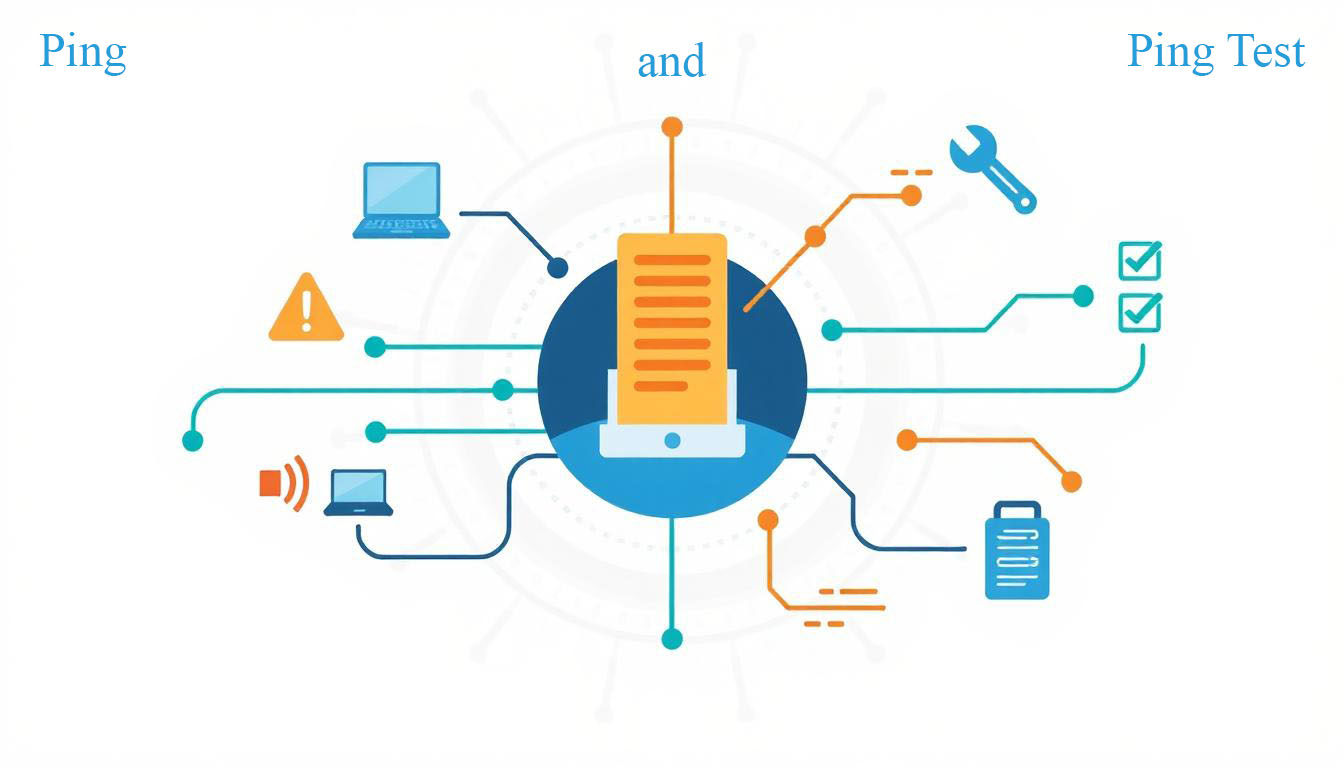What is Ping and Ping Test?
If you work with the internet, you’ve probably heard of the terms “Ping” or “Ping Test.” This tool is one of the most fundamental and important methods for checking the status of a network, and in this article, we will explain it in detail.
What is Ping?
Ping is a tool and command used in computer networks to check the connection between two devices on a network. It was first introduced by “Mike Morris” in 1983, and its name is derived from the sound produced by submarine sonar.
Ping uses the ICMP (Internet Control Message Protocol) to send packets called “Echo Request” to a destination and receive responses called “Echo Reply.” This process allows us to check the following:
- The availability of a device or server.
- The latency in sending and receiving packets.
- The packet loss rate.
Applications of Ping
- Network Connectivity Check: Using ping, you can confirm whether your device is connected to a server or website.
- Network Latency Measurement: Ping can measure the delay or round-trip time (RTT) of data packets between two devices, typically expressed in milliseconds (ms).
- Network Troubleshooting: If you are facing issues with your internet connection or local network, ping can help you identify the problem location.
- Server Monitoring: Network administrators use ping to ensure the availability of servers and services.
What is a Ping Test?
A Ping Test is a process used to evaluate the quality of network communication between two points. It’s a valuable tool for assessing network connectivity, identifying potential issues, and troubleshooting them effectively. This test typically includes measuring the following:
- Round-Trip Time (RTT): The time it takes for a packet to travel from the source to the destination and for its response to return.
- Packet Loss: The percentage of packets that are lost during the transmission.
- Jitter: The variation in the delay of packet delivery, which can affect communication quality, especially in VoIP calls and online gaming.
Factors Affecting Ping
- Geographical Distance: Greater distances increase latency.
- Network Quality: Network equipment and bandwidth influence the ping rate.
- Network Traffic: Network congestion can increase response times.
- Firewall and Security Settings: These can sometimes cause delays.
Conclusion
Ping and Ping Test are simple yet powerful tools for assessing network quality. By using these tools, you can identify network issues and take action to improve your communication quality. Whether you are an average user or a network administrator, understanding the concept of ping helps you have a better experience with the internet and computer networks.

